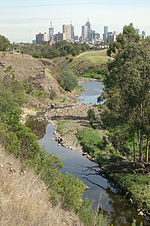Islamic Museum of Australia
2010 establishments in AustraliaAustralian art awardsBuildings and structures in the City of DarebinCommunity museumsIslamic museums ... and 9 more
Islamic organisations based in AustraliaIslamic organizations established in the 2010sMuseums established in 2010Museums in MelbournePages with non-numeric formatnum argumentsReligious buildings and structures in MelbourneReligious museums in AustraliaReligious organizations established in 2010Use Australian English from March 2020

The Islamic Museum of Australia (IMA) is a community museum in Thornbury, Melbourne, Victoria, Australia. It began as a not-for-profit foundation founded in May 2010 with the purpose of establishing the first Islamic museum in Australia. It aims to showcase the artistic heritage and historical contributions of Muslims in Australia and abroad through the display of artworks and historical artefacts.
Excerpt from the Wikipedia article Islamic Museum of Australia (License: CC BY-SA 3.0, Authors, Images).Islamic Museum of Australia
Anderson Road, Melbourne Thornbury
Geographical coordinates (GPS) Address Website External links Nearby Places Show on map
Geographical coordinates (GPS)
| Latitude | Longitude |
|---|---|
| N -37.75451 ° | E 144.98079 ° |
Address
Islamic Museum of Australia
Anderson Road 15A
3071 Melbourne, Thornbury
Victoria, Australia
Open on Google Maps





